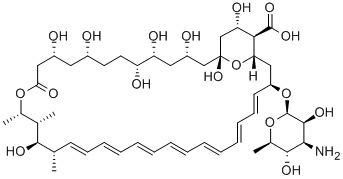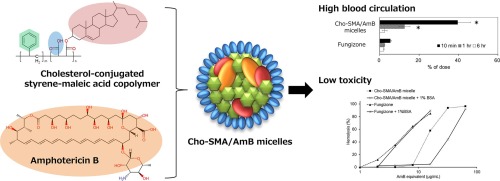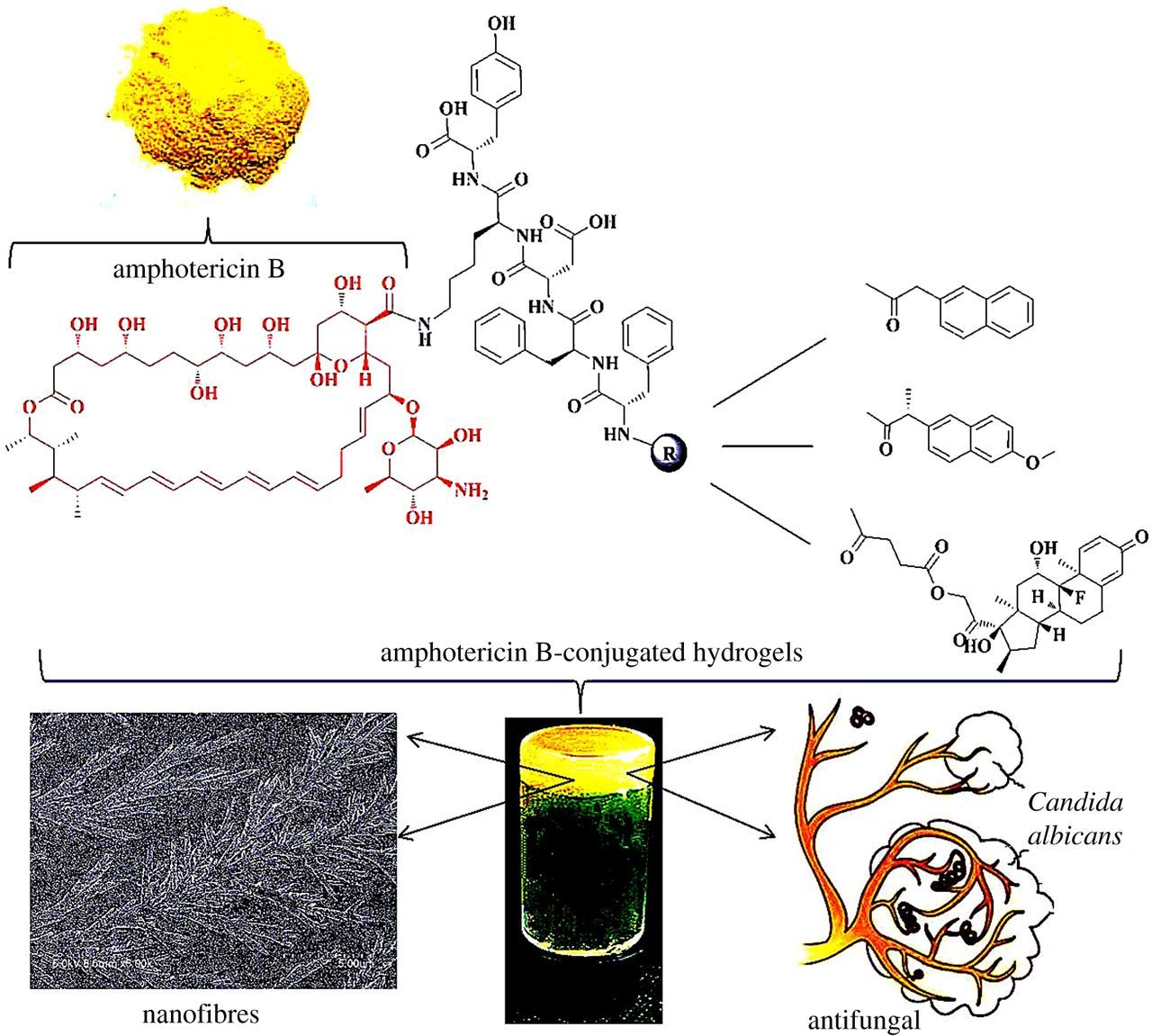Amphotericin B: A Comprehensive Overview
Amphotericin B (AB) stands as a cornerstone in antifungal therapy, exhibiting remarkable efficacy against a wide spectrum of fungal pathogens. Its polyene macrolide structure imparts potent antifungal activity by disrupting fungal cell membranes, leading to cellular content leakage and subsequent cell death.
Amphotericin B: A Broad-Spectrum Antifungal Agent
Amphotericin B (AB) is a polyene macrolide antibiotic that is used to treat a variety of fungal infections. It is a broad-spectrum antifungal agent, meaning that it is effective against a wide range of fungi. AB works by disrupting the cell membrane of fungi, leading to leakage of cellular contents and cell death.
AB is available in both intravenous and topical formulations. The intravenous formulation is used to treat systemic fungal infections, while the topical formulation is used to treat fungal skin infections.
AB is a potent antifungal agent, but it can also cause serious side effects. The most common side effects of AB are nephrotoxicity (kidney damage), neurotoxicity (damage to the nervous system), and electrolyte imbalances. AB can also cause infusion-related reactions, including fever, chills, and nausea.
Despite the potential for serious side effects, AB is an important antifungal agent that can save lives. It is used to treat a variety of life-threatening fungal infections.
Here are some of the most important things to know about AB:
- It is a broad-spectrum antifungal agent that is effective against a wide range of fungi.
- It is available in both intravenous and topical formulations.
- It is a potent antifungal agent, but it can also cause serious side effects.
- It is used to treat a variety of life-threatening fungal infections.
Amphotericin B (AB)
Introduction
Amphotericin B (AB) is a broad-spectrum antifungal polyene macrolide antibiotic used to treat a variety of fungal infections. It is derived from the fungus Streptomyces nodosus and is effective against a wide range of fungi, including Candida species, Aspergillus species, and Cryptococcus neoformans.
Chemical Structure and Properties
AB is a complex molecule with a molecular weight of approximately 950 kDa. It contains a polyene macrolide ring with seven conjugated double bonds, which are responsible for its antifungal activity. AB is a yellow to orange powder that is insoluble in water but soluble in ethanol and DMSO.
Mechanism of Action
AB works by disrupting the cell membrane of fungi. The polyene macrolide ring of AB binds to sterols, such as ergosterol, which are found in the fungal cell membrane. This binding causes the formation of pores in the membrane, leading to leakage of cellular contents and cell death.
Spectrum of Activity
AB is active against a wide range of fungi, including both yeasts and molds. It is particularly effective against Candida species, Aspergillus species, and Cryptococcus neoformans. AB is also active against some protozoa, such as Pneumocystis carinii.
Clinical Indications
AB is used to treat a variety of fungal infections, including:
- Aspergillosis: A fungal infection that can affect the lungs, sinuses, and other organs.
- Blastomycosis: A fungal infection that can affect the skin, lungs, and bones.
- Candidiasis: A fungal infection that can affect the skin, mucous membranes, and bloodstream.
- Cryptococcosis: A fungal infection that can affect the lungs, brain, and other organs.
- Histoplasmosis: A fungal infection that can affect the lungs, lymph nodes, and other organs.
- Mucormycosis: A fungal infection that can affect the sinuses, lungs, and brain.
- Pneumocystis jirovecii pneumonia (PCP): A fungal infection that can cause pneumonia in people with weakened immune systems.
Dosage and Administration
AB is typically administered intravenously. The dosage varies depending on the type and severity of the infection. AB can also be administered topically to treat fungal skin infections.
Side Effects
AB can cause a number of side effects, some of which can be serious. The most common side effects of AB are:
- Nephrotoxicity: Kidney damage
- Neurotoxicity: Damage to the nervous system
- Electrolyte imbalances
- Infusion-related reactions: Fever, chills, nausea, and vomiting
Contraindications
AB is contraindicated in patients with:
- Hypersensitivity to AB or any of its components
- Severe renal insufficiency
- Severe hepatic insufficiency
- Pregnancy
Pregnancy and Lactation
AB is contraindicated in pregnancy. It is not known if AB is excreted in breast milk, but it is recommended that mothers avoid breastfeeding while taking this medication.
Storage
AB should be stored at room temperature away from light and moisture.
References
- Krcmery, V., & Espineira-de-Melo, P. (2001). Amphotericin B: clinical aspects and perspectives. Clinical microbiology and infection, 7(10), 622-633.
- Walsh, T. J., & Anaissie, E. J. (2002). Amphotericin B: spectrum of antifungal activity and clinical applications. Clinical infectious diseases, 35(Supplement 2), S16-S24.
- Pappas, P. G., & Fung, H. C. (2006). Marine natural products as a source of new antifungal drugs. Current drug discovery, 3(3), 161-180.
Additional Notes
- AB is a potent antifungal agent that can be life-saving for patients with severe fungal infections.
- It is important to be aware of the potential side effects of AB and to talk to your doctor about any concerns you may have.
- There are a number of newer antifungal agents available that have fewer side effects than AB, but these agents may not be as effective against certain fungi.
Amphotericin B (AB) stands as a potent and widely utilized antifungal agent, representing a critical tool in the field of medical mycology. Renowned for its broad-spectrum activity against a diverse array of fungal species, Amphotericin B plays a pivotal role in combating life-threatening fungal infections. This polyene macrolide antibiotic is derived from Streptomyces nodosus and is characterized by its unique structure, featuring a hydrophobic polyene tail and a hydrophilic polyol region. The mechanism of action of Amphotericin B is attributed to its ability to bind to fungal cell membranes, forming channels that disrupt membrane integrity. This disruptive effect ultimately leads to the leakage of cellular components, compromising the structural integrity of the fungal cell.
Amphotericin B finds extensive application in the clinical setting, particularly in treating systemic fungal infections that pose significant challenges due to their resistance to other antifungal agents. Despite its efficacy, the use of Amphotericin B is carefully monitored, owing to its association with potential adverse effects, including nephrotoxicity. To mitigate these effects, lipid formulations of Amphotericin B have been developed, offering improved safety profiles while retaining therapeutic efficacy.
In addition to its clinical role, Amphotericin B is a valuable tool in laboratory research. Its ability to selectively target fungal cells without affecting mammalian cells makes it an indispensable agent for studying fungal pathogenesis and exploring potential antifungal strategies.
As both a life-saving therapeutic and a research tool, Amphotericin B continues to be a cornerstone in the fight against fungal infections, contributing significantly to advancements in medical mycology and our understanding of fungal biology.
Conclusion
Amphotericin B (AB) is a valuable antifungal agent with a broad spectrum of activity against a variety of fungi. It is a first-line therapy for several severe fungal infections, including mucormycosis, aspergillosis, blastomycosis, candidiasis, coccidioidomycosis, and cryptococcosis. However, AB is associated with significant side effects, primarily due to its interaction with cell membranes.
The development of lipid formulations of AB has significantly improved the safety profile of the drug. These formulations have shown reduced nephrotoxicity and improved tolerability compared to conventional AB. As a result, AB is now a more viable treatment option for a wider range of patients, including those who are at increased risk for nephrotoxicity.
The future of AB therapy is likely to focus on further improving the drug's safety and efficacy. Newer formulations of AB are being developed that are designed to further reduce nephrotoxicity and other side effects. Additionally, research is underway to develop new antifungal agents that are as effective as AB but have a more favorable safety profile.





